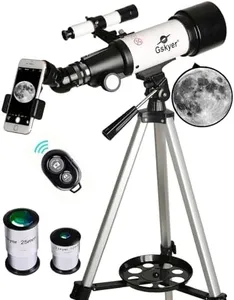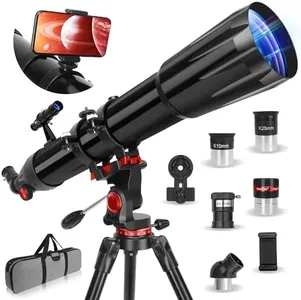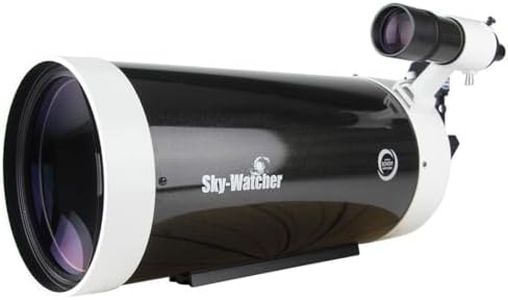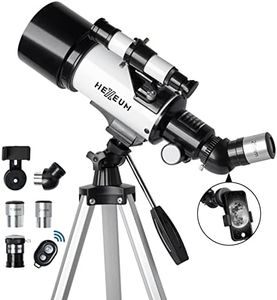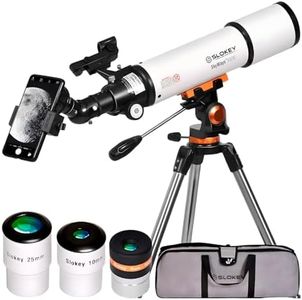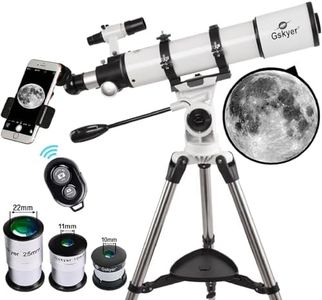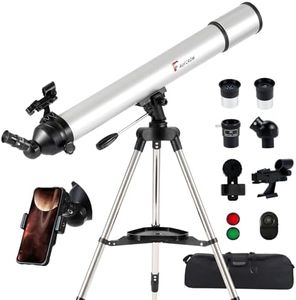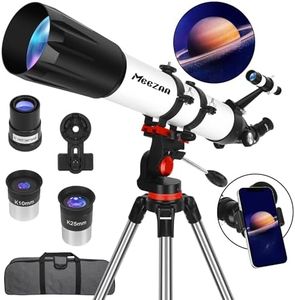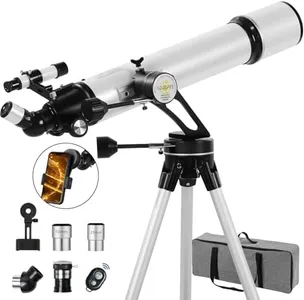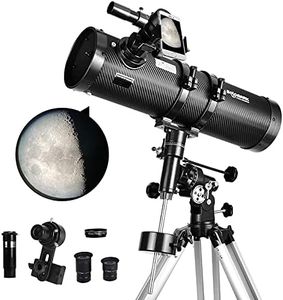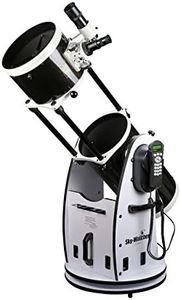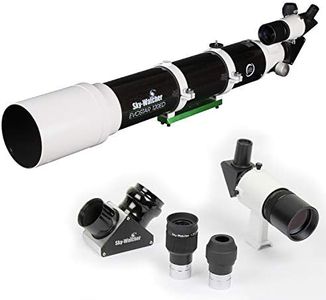10 Best Telescopes 2025 in the United States
Our technology thoroughly searches through the online shopping world, reviewing hundreds of sites. We then process and analyze this information, updating in real-time to bring you the latest top-rated products. This way, you always get the best and most current options available.

Our Top Picks
Winner
Gskyer Telescope, 70mm Aperture 400mm AZ Mount Astronomical Refracting Telescope for Kids Beginners - Travel Telescope with Carry Bag, Phone Adapter and Wireless Remote.
Most important from
21641 reviews
The Gskyer Telescope is an excellent choice for kids and beginners who are interested in exploring astronomy. With a 70mm aperture and 400mm focal length, it provides clear and bright images of the moon and stars. The fully coated optics ensure high transmission of light, enhancing image quality and protecting your eyes. The included 3x Barlow lens and two eyepieces offer versatile magnification options, making it easier to locate and observe celestial objects using the 5x24 finder scope. The Altazimuth mount allows smooth and simple movement, making it user-friendly for beginners.
The adjustable aluminum tripod and carry bag enhance its portability, allowing you to take it on your travels conveniently. The added smartphone adapter and wireless camera remote are great for capturing and sharing your celestial discoveries. While this telescope is highly rated and popular, its manual focus might require some practice to get right, and it’s designed mainly for casual star-gazing rather than advanced astronomical research.
Nonetheless, for its price point and ease of use, it's a solid entry-level telescope for those starting their journey into astronomy.
Most important from
21641 reviews
Telescope 150EQ Astronomical Reflector Telescopes for Adults,Professional Manual Equatorial Telescope for Beginners.Comes with 2X Barlow Lens Phone Adapter,Stainless Tripod and Moon Filter
Most important from
194 reviews
The Dianfan 150EQ Astronomical Reflector Telescope offers a substantial 150mm aperture, which is excellent for capturing detailed images of celestial objects. Its 650mm focal length makes it quite versatile for both deep-sky and planetary observations. The inclusion of a 2x Barlow lens further enhances its magnification capabilities. Its German Equatorial Mount is a significant feature, providing precise tracking of celestial objects, which is great for those wanting to take their stargazing to the next level. This mount is pre-assembled, which simplifies setup for beginners.
The telescope comes fully equipped with two quality eyepieces, a phone adapter, a moon filter, and a red dot finderscope, making it user-friendly and ready for immediate use. The stainless steel tripod ensures a stable and durable foundation, adding to the ease of use for both novice and experienced stargazers. However, at 33 pounds, it is relatively heavy, which might make transportation challenging for some users. Additionally, as a manual focus telescope, it requires some learning and adjustment, particularly for beginners.
Despite these minor drawbacks, this telescope is a strong contender for both adults and kids who are serious about astronomy. The combination of quality optics, stable mounting, and comprehensive accessories make it suitable for a wide range of users, from beginners to more experienced astronomers.
Most important from
194 reviews
Telescope,Telescope for Adults High Powered, 90mm Aperture 900mm Professional Refractor Telescopes for Kids & Beginners, Magnification 450X,for Planet Observation with Stainless Tripod & Phone Adapter
Most important from
158 reviews
The HETEKAN Telescope for Adults and Beginners is designed for those interested in exploring the night sky, particularly for lunar and planetary observation. This refractor telescope features a 90mm aperture which allows more light to enter, providing bright and clear images. Its fully multi-coated optical glass lenses minimize light reflection, enhancing image quality while protecting the viewer's eyes. With a focal length of 900mm and a variable magnification range from 36X to 450X, thanks to three different eyepieces and a 3x Barlow lens, this telescope delivers a versatile viewing experience.
The included 5x24 finder scope helps in locating celestial objects more easily. The telescope comes with an adjustable stainless steel tripod that offers 360-degree horizontal and 180-degree vertical movement, making it adaptable for users of different heights (adjustable from 28.5 to 45 inches). Additionally, it includes a phone adapter, allowing users to capture images of their observations. Setup is straightforward, supported by a detailed guide and customer service for further assistance.
However, at a weight of 12.12 pounds and its dimensions, it may not be the most portable option for those looking to travel frequently with their telescope. The Altazimuth mount is user-friendly but might lack the precision required by more experienced astronomers. This telescope is ideal for beginners and intermediate users who want a reliable and high-powered device for stargazing.
